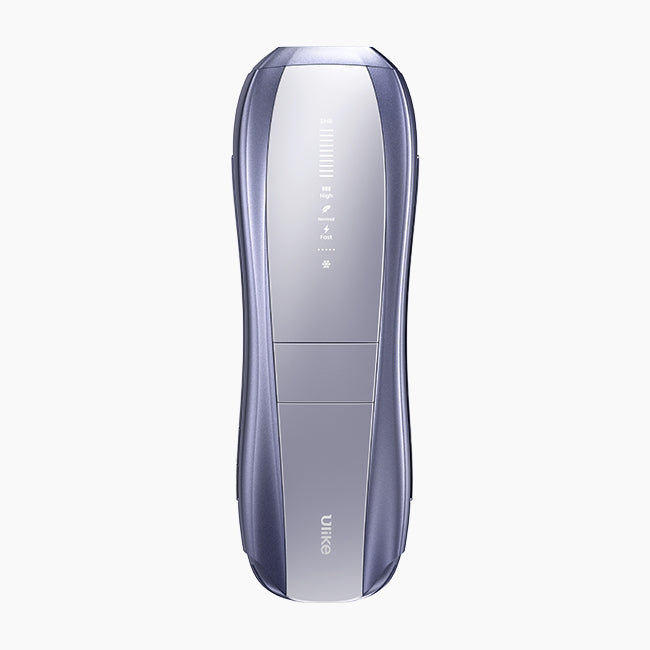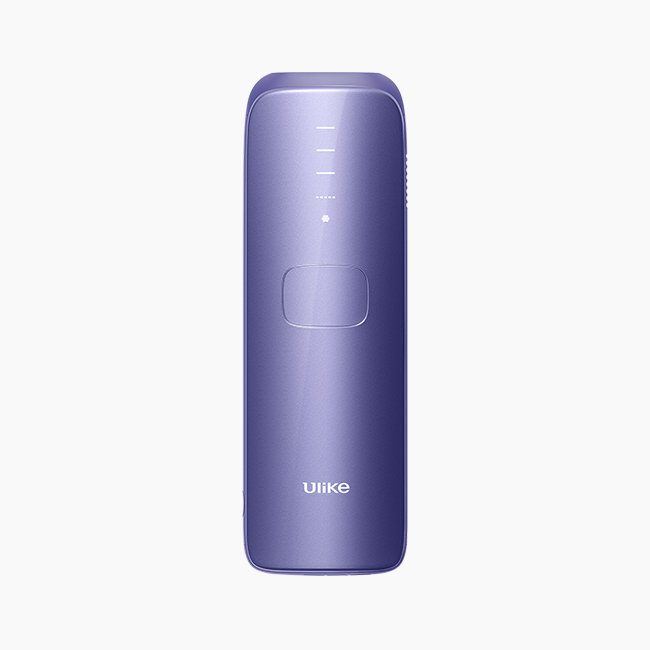Swimming in the ocean or with your friends at the poolside may have crossed your mind after a laser hair removal treatment session. It may be summer time now and this calls for swimming right? Do you think about swimming right after undergoing laser hair removal? Consideration of realism and safety suggests you should not. In case you resisted the urge one dark side is that irritations may occur as well as infections or even microscopic tears can happen in those delicate regions which are now void of hairs but with soft shiny skin. At what interval can a person get back into the pool post their previous hair removal session? Is it safe enough? What measures are there about this? Let's find answers.
Table of Contents:
- Part 1: Why Can't You Go Swimming After Laser Hair Removal?
- Part 2: Is It Ok For Me To Go To Saunas After A Laser Hair Removal Session?
- Part 3: How Long Should I Wait Before Going For Swimming After A Session Of Laser Hair Removal Or IPL Procedure?
- Part 4: Is There Any Difference Between The Downtime For Lasers And IPL? Which One Allows Immediate Swimming ?
Why Can't You Go Swimming After Laser Hair Removal?
Why I can not swim after I have had hair removed through laser or IPL? Owing to some factors, this is clear. To begin, let us look at each separately.
Skin Hypersensitivity Post-Laser Treatment

It’s not unusual for the skin to become super prickly after using laser or IPL treatments for hair removal. This is because during this treatment the hair follicles in the skin’s dermis level are targeted. When the laser gives its power, it gets changed into a mechanical heat that destroys the roots of hair situated in these follicles preventing any growth or slowing it down. For example, near the follicle are arrector pili, sabecous glands, and other receptors which react defensively in order not to allow more injury to them. Hypersensitivity is therefore brought about by the above process which makes the skin slightly swollen, red, and sometimes sore. Nevertheless, it’s fine to experience some little pain just after the treatment and give the skin a time to heal.
Exposure to Chlorinated or salt Water
The problem with most swimming pools is that they have a significant amount of chlorine in them, a potent disinfectant that can damage the skin’s topmost layer or its lipid barrier-forming structure that holds moisture on one side preventing it from drying out while preventing cuts or any invasion by toxic substances. Chlorine, when exposed to weakened skin barrier that results from laser or IPL treatments causes transepidermal water loss (TEWL). This localized dehydration results in increased dryness, itching or even numbing sensations. Besides, chlorine may cause irritation on pre-existing fragile breakouts in the skin as well, hence slowing down its healing time. If swimming is necessary after the treatments, always choose private and unchlorinated pools or one with balanced pH levels, as these are less likely to irritate the skin compared to pools with concentrated chlorine.
On the other hand, when going to beaches after laser hair removal, the sodium chloride in the water or sand mixed in water, may increase the abrasion and irritation.
Follicular Healing Time
After laser hair removal, folicles take 2 to 4 days to recover from this trauma. During the first 24 to 48 hours, most of the people see mild redness and swelling that just appear like light sunburn. These symptoms usually disappear in the first 24 hours. After this time, the affected dermis starts its natural healing process, which takes about 1 to 4 days. The hair follicles go through the shedding phase. The superficial layer of skin might appear normal, but deep down the healing of dermis goes on. Therefore, the experts have advised to refrain from exposing our bodies to harsh conditions like those of a pool (with chlorine) or the sunlight during first 24 to 48 hours. If the exposure is needed, always wear sunscreen with SPF 30 or above.
Water-Borne Skin Diseases
Although there are fewer chances of getting water-borne skin infections during swimming. But skin after laser hair removal becomes sensitive and the natural barrier is disrupted temporarily.
Bacterial Infection
Folliculitis is one of the bacterial infections which is caused by S. aureus or P. aeruginosa, resulting in pus-filled small bumps. Sometimes, it can also lead to developing cellulitis or cysts formation.
Fungal and Parasitic Infections
Fungi like Ringworms (tinea) and parasites like Amoebas or Giardia commonly grow in moist climates by water bodies shared by more than one person. These microbes attack the vulnerable and hypersensitive skin and cause skin diseases marked by itchy red spots, pain and inflammation. Therefore, these microbes can infect you when you go swimming after laser hair removal.
Exposure to Harmful Radiations

Natural sunlight also contains some dangerous radiations including UVA. UVB and UVC. As we all know, IPL and lasers target melanin pigment which is produced from melanocytes in the skin. When melanocytes are triggered by harmful UV radiations it can lead to skin cancers, photoaging and sunburn. After undergoing laser hair removal, it is important to prevent exposure to these radiations. The skin turns hypersensitive following a laser treatment. The sun’s UV rays may trigger this response, and can result in increased inflammation, liver spots, heat stress, delayed healing, skin peeling, scarring, hyperpigmentation, hypopigmentation and uneven skin tones (ocassionally, not always).
Exposure to Environmental Pollutants
The skin’s natural recovery after laser hair removal can be affected by environmental pollutants (articulate matter, ozone, and smog) in a negative way. Oxidative stress caused by these pollutants increases inflammation and irritation on the already sensitive post-treatment skin. These pollutants triggers the production of free radicals, which in turn initiate the damage at cellular level. Thus, slowing down the healing process.
Is It Ok For Me To Go To Saunas After A Laser Hair Removal Session?
Vasodilation (expansion of blood vessels) happens when you subject your skin to high temperatures like the ones found at spas or while in a sauna. After exposure to heat, the smooth muscle wall of blood vessels relaxes, thus allowing for increased blood circulation, inflammatory compunds and white blood cells. This can be advantageous in other aspects but after laser hair removal, it results in extensive swelling and redness. It also worsens inflammation by increasing the amount of blood circulating around affected areas and attracting more cytokines to the effected areas, hence making them more painful and slow recovery. However, cryotherapy or cold water immersion can be helpful for closing the pores, reducing vasoconstriction and thus reducing the inflammation.
How Long Should I Wait Before Going For Swimming After A Session Of Laser Hair Removal Or IPL Procedure?
Dermatology Guidelines
After receiving laser hair removal treatment, most dermatologists usually advise that patients should wait for about 48–72 hours before they can go swimming or do anything else that might irritate treated skin by engaging in such activity. This downtime is aimed at ensuring that hair follicles recover as well as reducing chances of infection, irritation and inflammation.
Clinical Observations
Based on clinical observations and patient perceptions concerning how this works out practically, the time one would take before resuming swimming after laser removal of hair varies depending on the parts treated.
- When it comes to legs and arms, it usually takes a period between 24 and 48 hours.
- In sensitive areas, such as the armpits or bikini lines, where follicular density is high, it may need 5-7 days for full recovery before going swimming after laser hair removal.
- In the case of the face area, this period is shorter: typically around 24 hours.
Scientific Studies
People are advised that the recovery times range from 24-72 hours as per scientific information so as to avoid possible complications from swimming following laser hair removal treatments.
Is There Any Difference Between The Downtime For Lasers And IPL? Which One Allows Immediate Swimming?
Immediate swimming after laser hair removal is not recommended either with lasers or IPL. However, let's compare the healing time for both.
Features |
Laser Hair Removal |
IPL; Ulike Air 10 |
|
Treatment Depth |
Penetrates deeply into hair follicles, leading to greater skin sensitivity and redness. |
IPLs like Ulike Air 10 provide precise energy penetration with broader coverage and typically result in milder skin reactions. |
|
Recommended Downtime Before Swimming |
48 to 72 hours, |
24 to 48 hours, |
|
Skin Irritation |
High chances of skin complications, requires proper healing and recovery time before swimming; healing occurs gradually |
Less chances of skin irritation; skin heals faster, allow swimming faster |
|
Area-Specific Downtime |
Bikini lines and underarms:5-7 days; Legs and arms: 3-4 days Face: 24 hours |
Sensitive areas like the bikini line or underarms only require 2-3 days of recovery |
Conclusion
Swimming after laser hair removal is not recommended because of the risk of exposure to a number of factors that can enhance inflammation, increase pain and swelling and decrease the natural recovery of skin. These factors are also responsible for decreasing the efficacy of lasers and IPL. However, to be on the safe side, a time of 24 to 48 hours is advised with both lasers and IPL before going swimming after hair removal.








